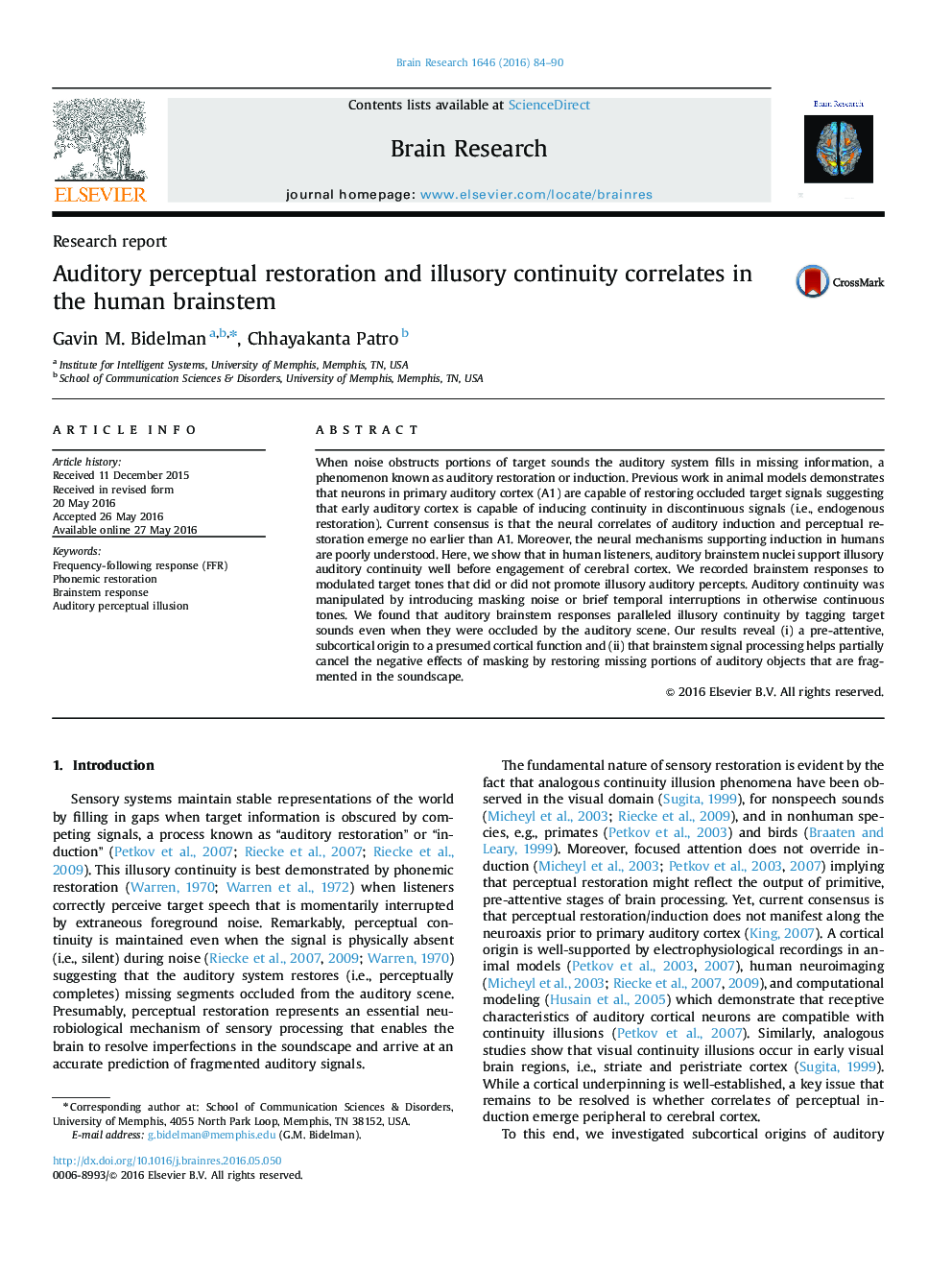| Article ID | Journal | Published Year | Pages | File Type |
|---|---|---|---|---|
| 6262387 | Brain Research | 2016 | 7 Pages |
â¢Examined brainstem correlates of the auditory perceptual restoration illusion.â¢Continuity was manipulated with noise or interruptions added to modulated tones.â¢Brainstem FFRs paralleled illusory continuity and tagged occluded target tones.â¢Correlates of perceptual restoration exist at pre-attentive subcortical levels.
When noise obstructs portions of target sounds the auditory system fills in missing information, a phenomenon known as auditory restoration or induction. Previous work in animal models demonstrates that neurons in primary auditory cortex (A1) are capable of restoring occluded target signals suggesting that early auditory cortex is capable of inducing continuity in discontinuous signals (i.e., endogenous restoration). Current consensus is that the neural correlates of auditory induction and perceptual restoration emerge no earlier than A1. Moreover, the neural mechanisms supporting induction in humans are poorly understood. Here, we show that in human listeners, auditory brainstem nuclei support illusory auditory continuity well before engagement of cerebral cortex. We recorded brainstem responses to modulated target tones that did or did not promote illusory auditory percepts. Auditory continuity was manipulated by introducing masking noise or brief temporal interruptions in otherwise continuous tones. We found that auditory brainstem responses paralleled illusory continuity by tagging target sounds even when they were occluded by the auditory scene. Our results reveal (i) a pre-attentive, subcortical origin to a presumed cortical function and (ii) that brainstem signal processing helps partially cancel the negative effects of masking by restoring missing portions of auditory objects that are fragmented in the soundscape.
